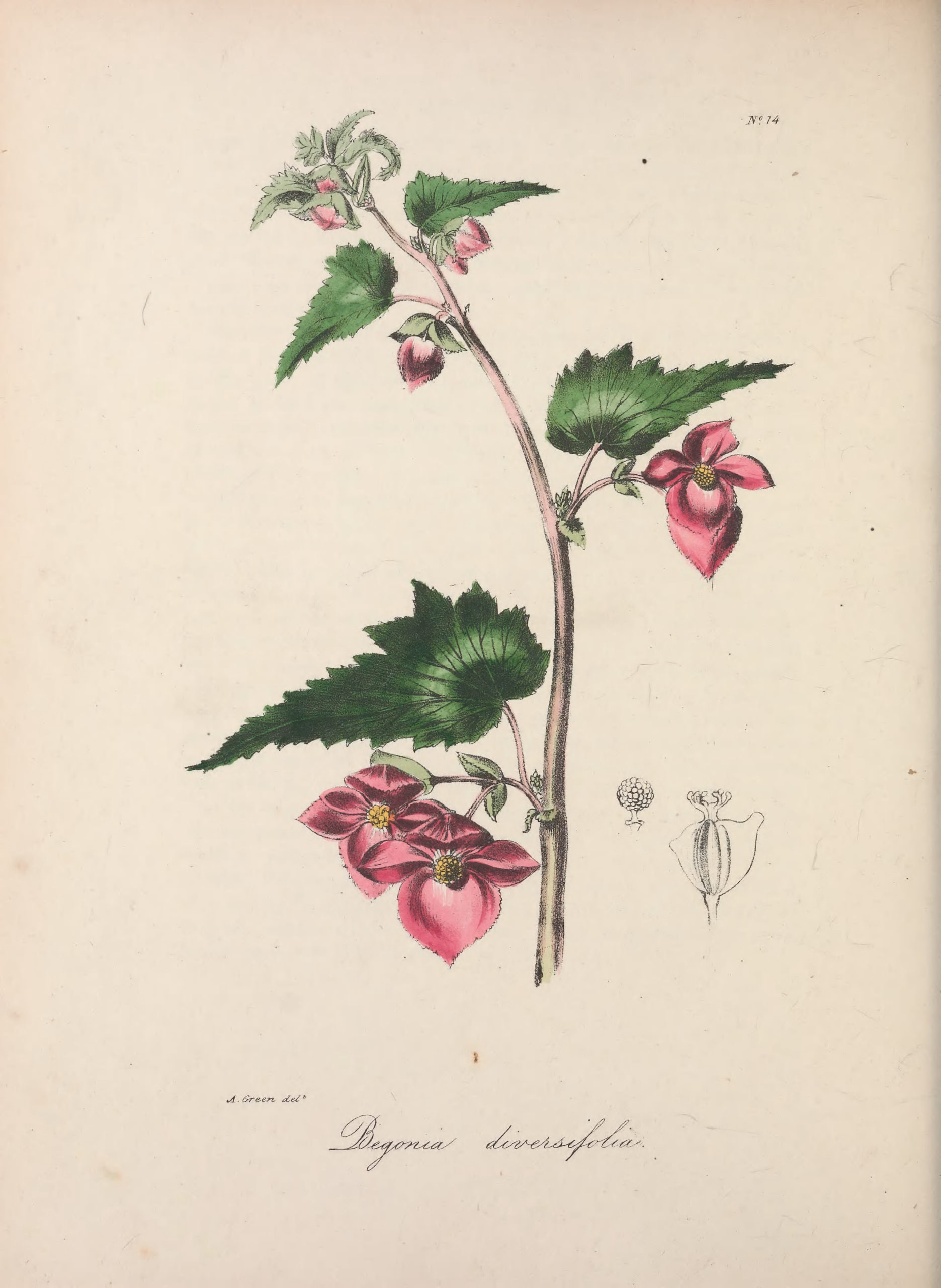from The floral cabinet and magazine of exotic botany (1837)
26
BEGONIA DIVERSIFOLIA.
This family, will clear up the point and set the question at rest. Until lately the genus Begonia was considered as belonging to the division Monochlamydese, that is, with only one floral envelope, which, according to modern writers, whether it be coloured or not, is called a calyx; as in Anemone and Polygonum; but Begonia petalodes, figured a short time ago in the Botanical Register by Dr. Lindley, clearly shows both calyx and corolla to be present ; and indeed we have seen one or two species which seem to indicate a similar formation ; one of which we shall shortly figure. The genus Begonia is composed of deciduous shrubs and herbaceous plants, all from tropical climates ; of which about fifty species are at present known. The whole of these are probably in a living state in Europe ; and by far the greater number may be procured in England from the nurserymen and florists, with whom they have always been favourite objects of culture for their beauty and singularity.
Their medical properties are not so well known as they probably deserve to be : the roots are said to be astringent and slightly bitter, and have been used suc- cessfully in hsemorrhages, in scorbutic affections, and in certain fevers. They are plants of easy culture, and are very generally seen in the windows of private dwellings, where they succeed very well if properly attended to and have sufficient water, of which they require a free supply. But the best method for their cultivation is to pot them in a mixture of peat and sand, or (as preferred by some) decayed vegetable matter, as old tan, and keep them in a humid atmosphere. Under such treatment they become delightful objects, and cannot but excite universal admiration. They are readily increased by cuttings of the young shoots in the spring, as well as by seeds. The readiest method of increase, however, is by the clusters of small gems which are formed abundantly upon the stems in the axillee of the leaves at almost every joint ; these may be collected when the stems begin to decay, and kept dry in paper until spring, when if sown with only about the sixteenth part of an inch of light soil put over them, they will soon vegetate. Plants raised by this means frequently flower the same season. During the winter, when the plants are in a dormant state, the soil in the pots should be kept almost without water. — The generic name, Begonia, was given to this tribe of plants by Linneus in honour of Michael Begon, a promoter of Botany ; its specific name, diversifolia, which is formed of two Latin words (diversum and folium, signifying different leaves), has reference to the various forms of the leaves on the plant, as noticed in the specific character. — Our drawing was made from a plant in the collection of the Birmingham Botanical and Horticultural Society.
Podcast: Play in new window | Download
Subscribe: RSS
